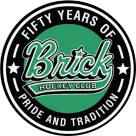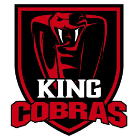Check-In and Rostering:
- Each team must provide scoresheet stickers for each game (1 per game for a total of 4 stickers).
- Each team manager and coach must check in before the first game and provide contact information to Showcase staff.
- Each team must provide an approved USA Hockey roster IN ADVANCE. This will be emailed to info@njyhl.org. The roster must be received by January 21, 2022.
- Any team roster that only includes one goaltender may, with prior approval, bring a back-up goaltender. The back-up goaltender may only participate in games if the rostered goaltender is unable to play. Advance approval may be obtained via email to info@njyhl.org. This advance approval must be requested by January 21, 2022.
- Teams must be ready to begin each game 15 minutes prior to the scheduled game time.
- Teams are required to bring 2 sets of jerseys (1 light and 1 dark). The home team wears light jerseys.
- Games begin at 3:00 pm on Friday, January 28th and end at 6:10 pm on Sunday, January 30th.
Pucks, Penalty Box Attendants, Scorekeeping and Timekeeping:
- Teams bring pucks for warmup and games.
- Each team must provide an attendant for each game.
- The rink staff will provide score/time keepers.
Rules:
- The official rules of USA Hockey will be used for all games.
- A 2-official system will be used for each game.
- Ice cut before each game.
- Officials shall enter the ice BEFORE the teams for every game. The warm-up clock begins as soon as the Officials complete their safety checks, put the nets in place and the ice resurfacer doors are closed.
- Ice slot length is 75 minutes.
- Period length is 15 minutes – stop time.
- Warm-up length is 5 minutes. All warm-up periods are placed on the game clock.
- Rest time in between periods is 1 minute.
- Overtime period length is 5 minutes sudden death (details below).
- Each team is permitted 1 time out for the duration of the game including overtime.
- Mercy rule:
- If at the end of the 2nd period, or any time in the 3rd period, one team shall reach a 10 goal advantage in score, the game shall be considered ended.
- Penalties:
- Minor – 1:30 minutes
- Major – 4:00 minutes
- Misconduct – 8:00 minutes
- There are no protests of penalties/suspensions due to rule infractions.
Overtime (for all games tied at the end of regulation time):
- Format
- 5-minute 3-on-3 period. If at the end of the overtime period a tie still exists, the two teams will continue playing 5 minute 3-on-3 overtime periods until there is a winner.
- 1 minute rest period after the end of regulation. Additional 1 minute rest period after the end of every 3rd OT period.
- Teams switch ends.
- Any skater on the team may be used.
- Changing on the fly is permitted.
- Penalties Carried Over From Regulation Time
- Unexpired penalties carry over into the overtime period(s).
- Teams play 4-on-3 (or 5-on-3 if there is more than 1 penalty that carries over).
- Penalties Incurred During Overtime
- The non-offending team will add a player (4-on-3). If a 2nd penalty is assessed before the 1st has expired, the non-offending team will add a 5th player (5-on-3).
- If the non-offending team does not score during the power play – then the on-ice strength will continue at 4-on-4 (5-on-5 if 2 penalties have been assessed) until a stoppage of play when the teams will resume play at 3-on-3.
- If coincidental penalties are called – the teams will continue to skate at 3-on-3.
Championship Game:
- The 1st place team in points from the DVHL and the 1st place team in points from the NJYHL will compete in the Championship game.
Points Structure:
- Regulation Win – 3 points
- Overtime Win – 2 points
- Overtime Loss – 1 point
- Regulation Loss – 0 points
Tiebreaker for Advancement to Championship Game (USA Hockey Rule):
- If two or more teams have an equal number of points, their position in the standings shall be determined by the following tie-breaking rules listed below. If at any point during the application of the tie-breaking rules, any or all of the teams can be seeded higher or lower than the other teams, the seeded teams will be placed in their position in the standings and the tie-breaking process will begin at Step 1 for any teams that remain tied. (If all tied teams have not played each other, then proceed to Step 2). Note: A team may go into the tie-breaking process having defeated another of the tied teams and still not advance.
- The tie-breaker rules are as follows:
1. The results of the head-to-head games played between the tied teams in the following order:
a. Most points earned.
b. Most total wins (whether in regulation, overtime and shootout).
c. Most regulation wins.
d. Differential — Subtracting goals against from goals for in these games, the positions being determined in order of the greatest surplus. A maximum goal differential of plus or minus eight (8) per game will be used in tie-breaking rules.
e. Quotient — Dividing the goals for by the goals against in these games, the positions being determined in order of the greatest quotient. If a game has a goal differential of more than eight (8) goals, the goals for will be decreased until there is a maximum of eight (8) more than goals against in a given game prior to dividing (i.e. 10-1 game would use 9-1 for purposes of Quotient. A quotient involving dividing by zero (0) has higher standing than a quotient from dividing by any number other than zero (0). Where two or more teams have no goals against and the quotient tie-breaker is required, the teams shall be ranked high to low in descending order of “goals for.”
f. Most periods won — In the games played by each tied team, points will be awarded for each regulation period won (2 points) and for each regulation period tied (1 point). Positions shall be in the order of highest point total.
2. If after applying the formulas of 1 a, b, c , d, e or f the tie still exists, the results of all the games played by the teams tied in the following order:
a. Most total wins (whether in regulation, overtime and shootout).
b. Most regulation wins.
c. Differential — Subtracting goals against from goals for in these games, the positions being determined in order of the greatest surplus. A maximum goal differential of plus or minus eight (8) per game will be used in tie-breaking rules.
d. Quotient — Dividing the goals for by the goals against in these games, the positions being determined in order of the greatest quotient. If a game has a goal differential of more than eight (8) goals, the goals for will be decreased until there is a maximum of eight (8) more than goals against in a given game prior to dividing (i.e. 10-1 game would use 9-1 for purposes of Quotient. A quotient involving dividing by zero (0) has higher standing than a quotient from dividing by any number other than zero (0). Where two or more teams have no goals against and the quotient tie-breaker is required, the teams shall be ranked high to low in descending order of “goals for.”
e. Most periods won — In the games played by each tied team, points will be awarded for each regulation period won (2 points) and for each regulation period tied (1 point). Positions shall be in the order of highest point total.
f. Lowest number of penalty minutes – Calculate the number of penalty minutes accrued during all preliminary round games. The teams shall be ranked low to high in ascending order of “penalty minutes for.”
g. Quickest first goal — The team that scored the quickest goal in their preliminary round games shall be ranked highest.
Note: If a team forfeits any of its games, and becomes involved in any tie-breaking formula to determine its eligibility to advance to the next level of play, the team forfeits all games in the round-robin play and the games are recorded as 1-0 victories for the non-offending team.























